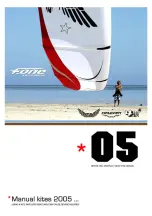
SCHEMPP-HIRTH FLUGZEUGBAU GmbH., KIRCHHEIM/TECK
Ventus-2c
FLIGHT MANUAL
For rearward c/g positions and low all-up masses the sailplane is lifted off with
flaps set at "0".
In the case of forward c/g positions or high all-up masses a setting of "+1", “+2”
or L may be used to shorten the ground roll distance. After lift-off, between
about 80 to 90 km/h (43-49 kt, 50-56 mph), depending on wing loading and flap
setting, the elevator trim (if necessary) can be set for minimum control stick
loads. With flaps set at "0", normal towing speed is in the region of 120 to 140
km/h (65-76 kt, 75-87 mph) and between about 130 to 150 km/h (70-81 kt,
68-93 mph) for higher all-up masses. At higher towing speeds and low all-up
masses, i.e. above about 160 km/h (86 kt, 99 mph), flap setting "-1" or "-2"
should be used (see diagram below). With these settings, speeds up to V
T
are
covered by the elevator trim.
Only small control surface deflections are necessary to keep station behind the
tug.
In gusty conditions or when flying into the propeller slip stream of a powerful
tug, correspondingly greater control stick movements are required.
At lower speeds the undercarriage may be retracted during the tow; this is not,
however, recommended at low altitude, because changing hands on the stick
could easily cause the powered sailplane to lose station behind the tug.
When releasing the tow rope, pull the yellow T-shaped handle fully several
times and turn only when definitely clear of the rope.
May 2006
LBA-app.
Revision 2
TN-No. 349-32
4.5.1.2
L
+2
+1
+1
mph
kt
km/h
GROUND RUN
LIFT-OFF
ON TOW
HIGH MASS
LOW MASS
















































